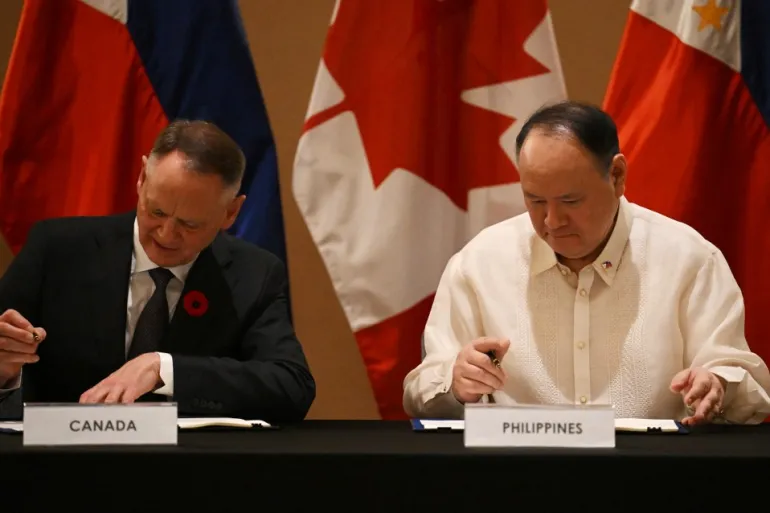
In a significant escalation of regional security cooperation, the Philippines and Canada have finalized a defence agreement aimed at strengthening military ties and countering China’s growing assertiveness in the contested waters of the South China Sea.
The deal, officially known as the Status of Visiting Forces Agreement (SOVFA), was signed on November 2, 2025, in Manila. It paves the way for closer military collaboration, including joint exercises, training, and enhanced information-sharing during conflict scenarios, humanitarian crises, and natural disasters.
A Strategic Response to China’s South China Sea Expansion
During a press briefing following the closed-door signing ceremony, Philippines Defence Secretary Gilberto Teodoro Jr underscored the importance of the agreement in supporting a rules-based international order in the Asia-Pacific.
“Who is hegemonic? Who wants to expand their territory in the world? China,” Teodoro declared, pointing directly at Beijing’s actions in the South China Sea as a threat to regional stability and sovereignty.
His Canadian counterpart, Defense Minister David McGuinty, emphasized the broader goals of the pact, noting that it will “strengthen joint preparedness, interoperability, and timely coordination between our armed forces,” especially in crisis situations.
This security pact mirrors similar agreements the Philippines has signed with other key allies, including the United States, Australia, Japan, and New Zealand. It clearly signals Manila’s intent to forge deeper defence ties with Western partners amid rising tensions.
China’s Reaction and Regional Tensions
Although China has yet to formally respond to the Canada-Philippines defence deal, Beijing has routinely slammed Manila’s recent military cooperation with the West. It has labelled the Philippines a “troublemaker” and “saboteur of regional stability,” especially following joint naval and aerial patrols in disputed waters.
China claims sovereignty over nearly the entire South China Sea, dismissing a 2016 international arbitration ruling that declared its territorial claims illegal. Over the past year, China’s coastguard vessels have repeatedly used aggressive tactics — including laser-pointing, water cannons, and vessel ramming — against Filipino ships near contested features such as Scarborough Shoal and Second Thomas Shoal.
Teodoro directly criticized China’s latest move to unilaterally declare a “nature reserve” around the Scarborough Shoal — a reef also claimed by the Philippines — saying it was nothing more than a thinly veiled attempt to militarize the region under the guise of conservation.
Growing Military Cooperation in the Asia-Pacific
With this latest agreement, the Philippines continues to expand its web of defence partnerships. Manila is reported to be in talks with several other nations, including France, Singapore, Germany, India, and the United Kingdom, to bolster maritime security and military readiness.
This broader strategy aligns with the Philippines’ efforts to modernize its military and defend its maritime territories amid increasing pressure from China.
For Canada, the SOVFA agreement marks a deeper strategic engagement in Southeast Asia. As a Pacific nation, Canada has long voiced its support for freedom of navigation and respect for international law in the South China Sea — one of the world’s most critical commercial and geopolitical regions.


Leave a Reply